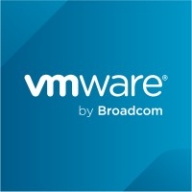

VMWare Tanzu CloudHealth and Morpheus are competing solutions in cloud management and optimization. Morpheus holds an upper hand due to its comprehensive feature set and flexibility, although it comes with a higher price.
Features: VMWare Tanzu CloudHealth provides robust cost management, detailed reporting, and financial oversight capabilities. Morpheus offers broad integration support, extensive automation features, and exceptional flexibility. Morpheus’s extensive integration scope allows it to efficiently handle complex operational needs.
Room for Improvement: VMWare Tanzu CloudHealth could enhance its integration features, expand automation capabilities, and improve operational flexibility. Morpheus might focus on simplifying its deployment process, reducing the required technical engagement, and refining its user interface for novice users.
Ease of Deployment and Customer Service: VMWare Tanzu CloudHealth is known for its streamlined deployment procedure and robust customer service, making it easy for new users. Morpheus, while requiring deeper technical engagement during deployment, provides responsive support that addresses intricate scenarios effectively.
Pricing and ROI: VMWare Tanzu CloudHealth offers a cost-effective pricing model that provides a strong ROI through cost-saving features, appealing to budget-conscious users. Morpheus, with a higher initial cost, presents significant ROI due to its comprehensive features that deliver substantial operational value.
| Product | Market Share (%) |
|---|---|
| Morpheus | 7.6% |
| VMWare Tanzu CloudHealth | 1.9% |
| Other | 90.5% |


| Company Size | Count |
|---|---|
| Small Business | 5 |
| Midsize Enterprise | 2 |
| Large Enterprise | 3 |
| Company Size | Count |
|---|---|
| Small Business | 4 |
| Midsize Enterprise | 2 |
| Large Enterprise | 4 |
Morpheus is a 100% agnostic cloud management platform (CMP) designed from the ground up to unify management of multi-cloud and hybrid IT while empowering DevOps teams with self-service provisioning of bare metal, VM, and container-based application services.
VMware Tanzu CloudHealth, formerly known as VMware Aria Cost Powered by CloudHealth, is a specialized cloud management platform tailored for Multi-Cloud Cost Optimization. It offers comprehensive visibility into cloud spending across various providers, enabling users to identify areas for optimization and make informed resource allocation decisions. With features like reserved instance management, resource rightsizing, and automated cost governance policies, it facilitates financial management for optimal cost efficiency. Beyond cost optimization, Tanzu CloudHealth enhances cloud operations through workload optimization and governance automation, catering to multi-cloud environments encompassing public, private, and hybrid clouds. Its primary focus remains on enabling organizations to effectively manage and reduce cloud expenditures while supporting operations across diverse cloud platforms.
We monitor all Cloud Management reviews to prevent fraudulent reviews and keep review quality high. We do not post reviews by company employees or direct competitors. We validate each review for authenticity via cross-reference with LinkedIn, and personal follow-up with the reviewer when necessary.